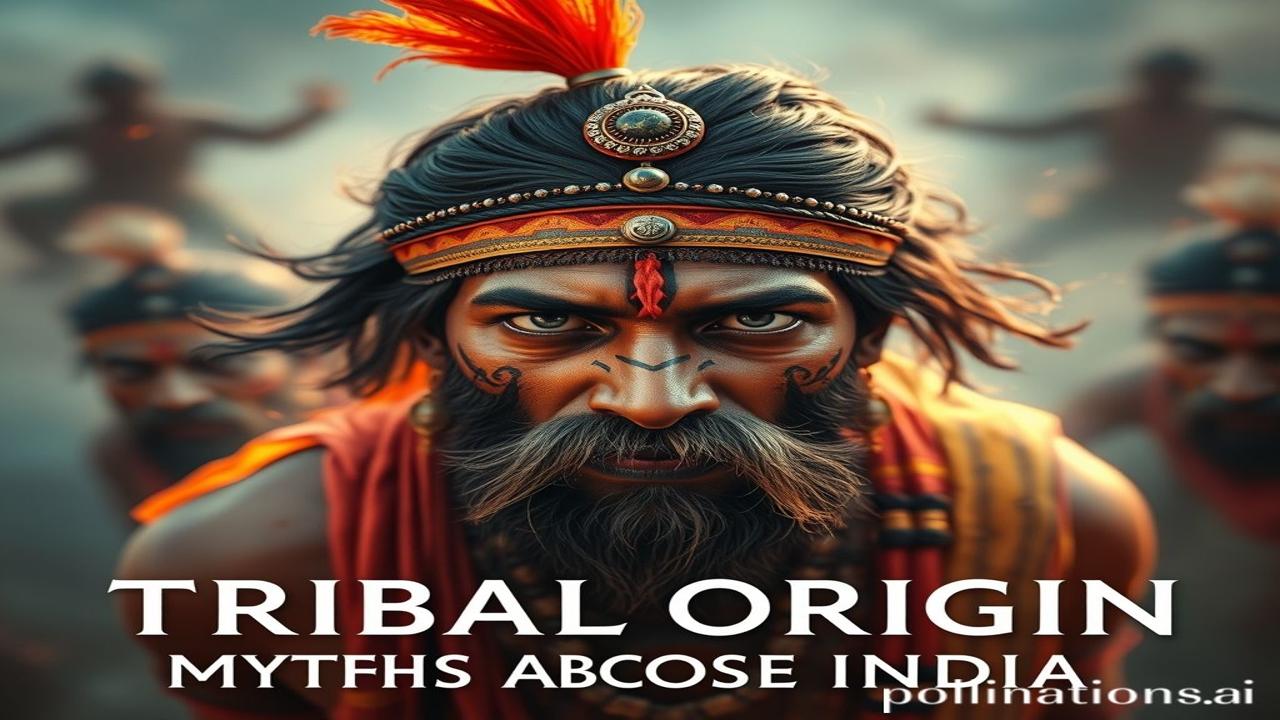Waqt Ki Dhool Mein Chhupi Kahaniyaan: Exploring Tribal Origin Myths Across India
Kabhi socha hai, agar hum apne purvajon ki aawaz sun paate toh kya sunte? India ek aisi zameen hai, jahan har patthar, har nadi, aur har jungle mein kahaniyan chhupi hain. Aur in kahaniyon ka ek bada hissa hamare tribal communities ke origin myths mein basta hai. These aren’t just fairy tales; they’re the blueprints of their culture, their values, and their connection to the land. Aao, waqt ki dhool udaate hain aur dekhte hain, in kahaniyon mein kya raaz chhupe hain.
Historical & Cultural Tapestry: Buniyadi Pathar
Origin myths are fundamental narratives that explain the creation of the universe, the emergence of humans, and the establishment of social order. In the Indian context, these myths hold immense significance for tribal communities, also referred to as Adivasis. These communities, representing a diverse range of ethnic and linguistic groups, have inhabited the Indian subcontinent for millennia, long before the arrival of the Aryan civilizations.
These origin myths often reflect the specific environment, lifestyle, and beliefs of the tribe. They are passed down orally through generations, acting as a vital tool for maintaining cultural identity and transmitting knowledge. We’re talking about histories that predate written records, existing solely in the memories and voices of storytellers. Imagine the weight of history carried on their shoulders! Think of the Gondwana region’s Gond tribes with their tales of Lingopen, the creator god, or the Khasi tribes of Meghalaya, whose origin story involves a heavenly ladder connecting earth and sky.
These narratives are not just historical accounts; they’re living scriptures, shaping social norms, ethical codes, and rituals. They explain why a particular tree is sacred, why a certain animal is revered, or why certain ceremonies are performed.
Zameeni Sach – Log Aur Jeevan: Tribals Ki Nazar Se Duniya
Imagine a young Gond boy, Raju, sitting around a crackling fire, listening to his grandfather narrate the tale of Lingopen creating the world. The firelight dances on the faces of the children, their eyes wide with wonder.
“Beta,” the grandfather says, his voice raspy with age, “Lingopen pehle akele the. Chaaron taraf paani hi paani tha. Phir unhone ek chidiya banayi, aur uss chidiya ne mitti lakar zameen banayi.”
Or picture a Khasi woman, Ka Meriem, weaving a traditional Jainsen (a Khasi garment), humming a melody that echoes the myth of their ancestors descending from heaven using a golden ladder. She remembers her grandmother telling her, “Ka jingim jong ngi ka long ka jingiasoh bad ka bneng” – “Our lives are a connection to heaven.”
These myths are woven into the very fabric of their daily lives. They dictate their relationship with nature, their social interactions, and their spiritual practices. Farmers plant seeds according to the guidance of ancient spirits, warriors chant mantras invoking the power of their mythical ancestors, and dancers re-enact creation stories during festivals.
Dharohar Aur Pehchan: Ajj Bhi Zinda
Even in modern India, these tribal origin myths continue to resonate. We see their influence in art, architecture, festivals, and languages. The vibrant tribal art forms, such as Warli paintings or Gond art, often depict scenes from their origin stories. The sacred groves protected by many tribal communities are a testament to their deep respect for nature, a respect rooted in their creation narratives.
In the Northeast, many communities still trace their lineage through matrilineal lines, reflecting the prominent role of female deities in their origin myths. Their languages, rich with ancient metaphors and allegories, continue to transmit these stories across generations.
These origin stories contribute significantly to “Bharatiyata” by highlighting the diversity and richness of Indian culture. They remind us that India is not a monolithic entity but a mosaic of diverse traditions, each with its unique perspective on the world. They offer a profound understanding of our past and influence our identity and our understanding of Indianness.
Mazedar Tathya Ya Bhram-Bhanjak: Sach Kya Hai?
Log samajhte hain ki tribal origin myths sirf superstitions hain, lekin asli sach yeh hai ki they represent a complex understanding of the universe and our place in it. They offer alternative cosmologies and epistemologies that challenge the dominant narratives. They teach us about sustainability, community, and respect for nature – values that are increasingly relevant in the modern world. It’s crucial to treat these stories with respect and recognize their profound cultural and intellectual value.
Drishya Aur Bhavnaen: Sensory Exploration
Imagine standing in a dense forest, the air thick with the scent of damp earth and blooming wildflowers. The sunlight filters through the leaves, dappling the forest floor with golden light. You hear the chirping of birds, the buzzing of insects, and the distant murmur of a stream.
As you walk deeper into the forest, you come across a clearing. In the center stands a sacred tree, adorned with colorful ribbons and offerings. The local tribals believe that this tree is the home of their ancestral spirits. You feel a sense of awe and reverence as you stand in their presence. The wind whispers through the leaves, carrying the echoes of ancient stories.
Antim Vichar Ya Uddharan: Aakhri Baat
These origin myths are more than just stories; they are a lifeline connecting us to our past and guiding us towards our future. They teach us about the importance of preserving our cultural heritage and respecting the diversity of human experience. Let us listen to these ancient voices, learn from their wisdom, and celebrate the richness of India’s tribal heritage.
“सर्वभूतस्थमात्मानं सर्वभूतानि चात्मनि।
ईक्षते योगयुक्तात्मा सर्वत्र समदर्शनः॥”
(Sarvabhootasthamatmanam sarvabhootani chaatmani।
Eekshate yogayuktaatma sarvatra samadarshanah॥)
- “He who sees himself in all beings and all beings in himself realizes the true unity of existence.”
May we all strive to see ourselves in the stories and struggles of others, and to recognize the interconnectedness of all life.
